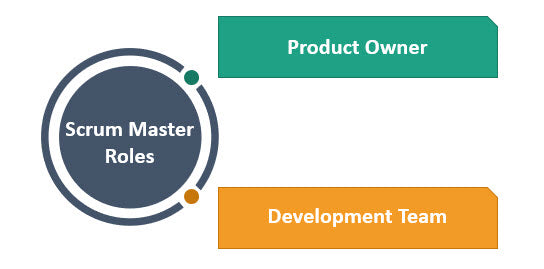Agile Scrum Master
The agile scrum master certification provides a way for people to get trained in the latest project management techniques. The training includes everything from hands-on exercises to lectures to prepare participants well when they take the exam at the end of the course. Learning these skills may help individuals advance their careers or even start their own company as a freelance consultant. The Agile Scrum Master certification is the first step to becoming a certified agile coach. It will allow you to take on leadership roles, guide teams through their product development process, and work with stakeholders in high-pressure environments.

What is Scrum?
It's a project management methodology that can manage software development projects. It has been around since the 1970s, and it was developed by Hirotaka Takeuchi and Ikujiro Nonaka at The University of New South Wales in Sydney, Australia. They were both professors at the time, and they wanted to develop an efficient new way for managing complex projects. It relies on self-organizing, cross-functional teams to break down the work into small enough pieces that can be completed in a short amount of time, typically two weeks.
Who is a Scrum Master?
The agile scrum master is the person who facilitates the process of agile development. They are responsible for ensuring that all team members adhere to the agreed-upon processes and procedures and remove any impediments that might be slowing down progress. Agile scrum masters are the leaders of software development teams that use an agile methodology.
How to Become a Scrum Master?
- Scrum and Agile Training - Agile Scrum master certification is an in-depth training course that covers the foundations of Scrum methodology, its application in various contexts, and how to successfully apply it in your organization. The training includes lectures, discussions, case studies, and exercises.
- Familiarity with Scrum Master Tools - Scrum masters are responsible for managing project-related tasks, time, costs, workflow, etc. Having a basic understanding of tools like Jira and Asana would be helpful.
- Teaching Abilities - A scrum master needs to explain to the teams how scrum works. They also play a good role in guiding the team in projects and enhancing their potential. Scrum master needs to possess good coaching skills along with technical skills.
- Handle Conflicts - If the team's disputes are not resolved among themselves, the scrum master's role is crucial to determine and ensure it doesn't hamper the team's progress. They need to have good interpersonal skills and find a solution satisfied by everyone.
Components of Scrum:

- Sprint Planning - Sprint planning is a framework that helps teams plan and organize their work. It can help strategize features, design, or any other type of project management. The goal of the sprint planning process is to create a roadmap for your team so you can see how far they've come and what lies ahead.
- Product Backlog - Product backlog is a list of the features implemented during the next release. A product backlog can also contain tasks such as bug fixes or any other work that needs to be done before you deliver your product.
- Sprint Review - A sprint review is a meeting at the end of every sprint. At this meeting, the team members share what they've accomplished and plan to accomplish next. The goal of the sprint review is to provide visibility into how work progressed during the previous weeks and where it's heading in the coming weeks.
- Sprint Retrospective - The sprint retrospective is a meeting that every agile team has at the end of every sprint to discuss what went well and how they can improve for next time. It takes place after sprint review and before the next sprint planning.
What's Scrum Master Demand Like Today?
The Scrum Master role is a new position in the tech industry. The demand for Scrum Masters has increased dramatically over the last few years, and this trend shows no signs of slowing down. Many companies are trying to find the right Scrum Master for their team. The problem is that there are not enough qualified people available with the experience and knowledge required. As per the scrum master trends report, 55 percent of scrum masters earn more than USD 75000 annually.
Scrum Master Responsibilities:

- Implement best project management practices - The scrum master is responsible for providing a clear vision of the product and creating or onboarding the team into projects. They also facilitate communication from the external team project team.
- Keeps team informed - Scrum masters track the progress of a project by hosting daily team meetings, providing feedback, and addressing any concern that arises. They also host regular meetings with stakeholders to share updates about how the project progresses.
- Introduces best agile practices - One such example is continuous integration. Continuous integration is the practice of merging all developers' code changes into shared mainline several times per day. Continuous integration aims to detect errors as quickly as possible and provide immediate feedback to the developer who introduced them. Continuous integration is an essential part of the process, and Scrum masters can play a significant role in ensuring this happens appropriately.
Scrum Master Roles:
Scrum masters are responsible for the smooth operation of a Scrum project. They act as facilitators, removing any impediments that arise during the project. However, there are other roles within scrum teams. We will look at some of them below:

- Product Owner - The product owner is responsible for maximizing value and ROI to help their organization deliver products or services with marketable features and benefits to meet customer demands.
- Development Team - A Scrum Team is a self-organizing, cross-functional group of people committed to delivering the project's product. The team has many responsibilities, including developing new products, fixing bugs, and adding features to an existing product. The team may consist of developers, UI/UX designers, analysts depending upon the project requirements.




